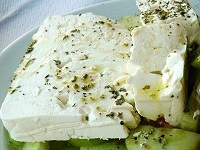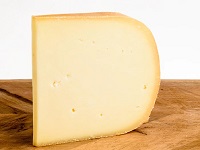Cinsault / Cinsaut (France)
Cinsault is a red wine grape from Languedoc-Roussillon in Southern France.
Cinsault is primarly used to blend with grapes such Grenache and Carignan.
Cinsault Flavors
Red fruit flavors are typical for Cinsault, particularly Strawberries and Raspberries.
Hints of Flowers, Herbs and White Pepper.
Strawberry |
Raspberry |
Red Cherry |
Pomegranate |
Violets |
Herbs |
White Pepper |
Spices |
Cinsault Profile
Cinsault wines are light-bodied with moderate tannins.
A juicy and fruity flavor profile makes them approachable and easy to drink:
| SUGAR: | Dry (3 g/l) |
| BODY: | Light |
| TANNINS: | Low |
| FRUIT: | High |
| ACIDITY: | Low - Medium |
| ALCOHOL: | 13-14% |
| Serving temperature: 14-15°C (57-59°F) | |
Cinsault Food Pairing
Cinsault's light and fruity nature makes it a versatile companion for various dishes.
It pairs especially well with French and Mediterranean Cuisine.
Olive Oil |
Antipasti |
Pasta |
Sandwitch |
Salami |
Ham |
Hamburger |
Escargot |
Chicken |
Lamb |
Pork |
Rabbit |
Excellent Pairings
Rabbit Stew.
Beef Stew (braised in red wine).
Moroccan Lamb.
Thai Curry.
Roasted Meat. Lamb. Goat. Chicken. Pork.
Cheeses
Semi Hard Cheese.
Gruyere. Asiago. Edamer. Gauda. Monterey Jack. Swiss.
French Specialities
Beef Bourguignon (Beef Burgundy).
Escargot (Snails in Garlic).
The Ideal Glass for Cinsault
The Burgundy Glass is for swirling & releasing the wine aromas.

|
The shape of the glass captures and directs the delicate aromas to your nose
and leads the wine to the tip of your tongue for a better reception of the tastes.
The Burgundy glass was designed for the delicate and aromatic red wine Bourgogne Rouge, made from Pinot Noir grapes in Bougogne (Burgundy). |
Cinsault Cheese Pairing
If You Like Cinsault
You Will Also Like:
About Cinsault
Cinsault (aka Cinsaut) is a red grape variety widely grown in many wine-producing regions around the world. It has a long history with origins believed to be in southern France.
It is found across France, Africa, Spain, USA and other parts of the New World.
Cinsault Blends
Cinsault produces large crops, have a smooth taste and is a preferred filler that can complement other grapes, by adding compexity and balance to the final blend.
In Southern Rhone it is mixed with Grenache, Syrah, Mourvedre and other grapes to make the famous blend of Châteauneuf-du-Pape.
In 1925, professor Abraham Izak Perold created a new grape: Pinotage. It was a cross of Pinot Noir and Cinsault aka Hermitage in South Africa (Do not confused with French Hermitage made by Syrah).
Rosé Wines
Due to its relatively low tannin levels and bright fruit character, Cinsault is often used in rosé wines. It is widely used for Rosé wines in Provence where its ability to retain acidity in the warm climate makes it an ideal choice for crafting refreshing and flavorful rosés.
Easy Drinking
Cinsault is valued for producing wines that are easy-drinking, making it a popular choice for everyday enjoyment.
While it might not have much aging potential, its fruit-forward character and versatility have earned it a dedicated following among wine enthusiasts.
Soil
Limestone |
Climate
Coastal plains |
Black Grapes
|
White Grapes
Ugni Blanc |
Red Wines
|
White Wines
Piquepoul Blanc Sparkling Wines: |
Alcohol can be addictive. Always drink in moderation.
© Copyright 2015-2025 W3 Wine School. All Rights Reserved.
















